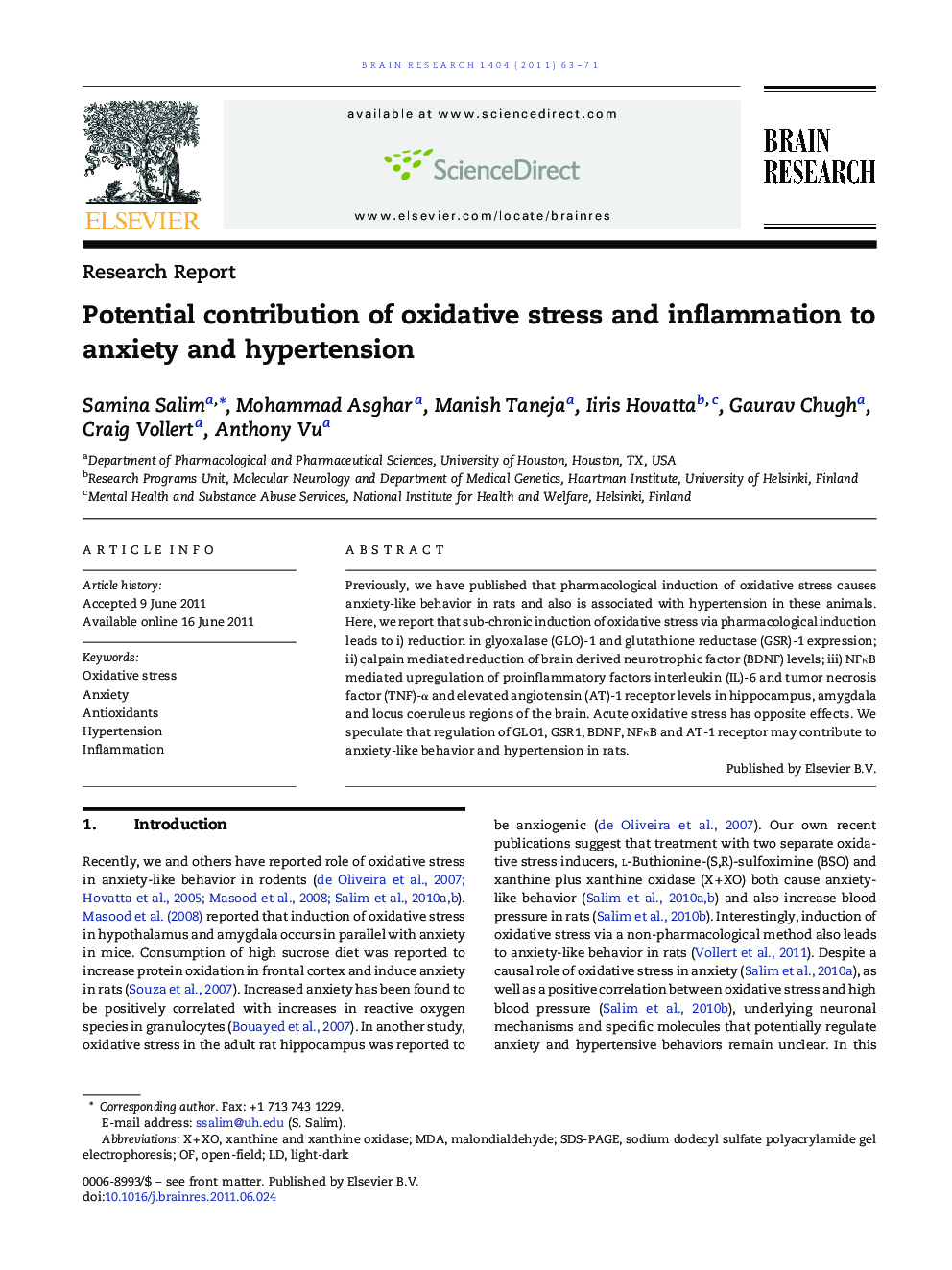| Article ID | Journal | Published Year | Pages | File Type |
|---|---|---|---|---|
| 4325760 | Brain Research | 2011 | 9 Pages |
Previously, we have published that pharmacological induction of oxidative stress causes anxiety-like behavior in rats and also is associated with hypertension in these animals. Here, we report that sub-chronic induction of oxidative stress via pharmacological induction leads to i) reduction in glyoxalase (GLO)-1 and glutathione reductase (GSR)-1 expression; ii) calpain mediated reduction of brain derived neurotrophic factor (BDNF) levels; iii) NFκB mediated upregulation of proinflammatory factors interleukin (IL)-6 and tumor necrosis factor (TNF)-α and elevated angiotensin (AT)-1 receptor levels in hippocampus, amygdala and locus coeruleus regions of the brain. Acute oxidative stress has opposite effects. We speculate that regulation of GLO1, GSR1, BDNF, NFκB and AT-1 receptor may contribute to anxiety-like behavior and hypertension in rats.
Research highlights► Acute versus sub-chronic oxidative stress differentially regulates Glyoxalase-1 and glutathione reductase-1 expression. ► Sub-chronic oxidative stress activates calpain pathway and reduces Brain derived neurotrophic factor (BDNF) expression. ► Sub-chronic oxidative stress activates transcription factor NFκB and increases angiotensin AT1 receptor expression ► Sub-chronic oxidative stress also activates pro-inflammatory factors. ► The study reveals potential molecular targets that collectively influence anxiety-like behavior and hypertension.
